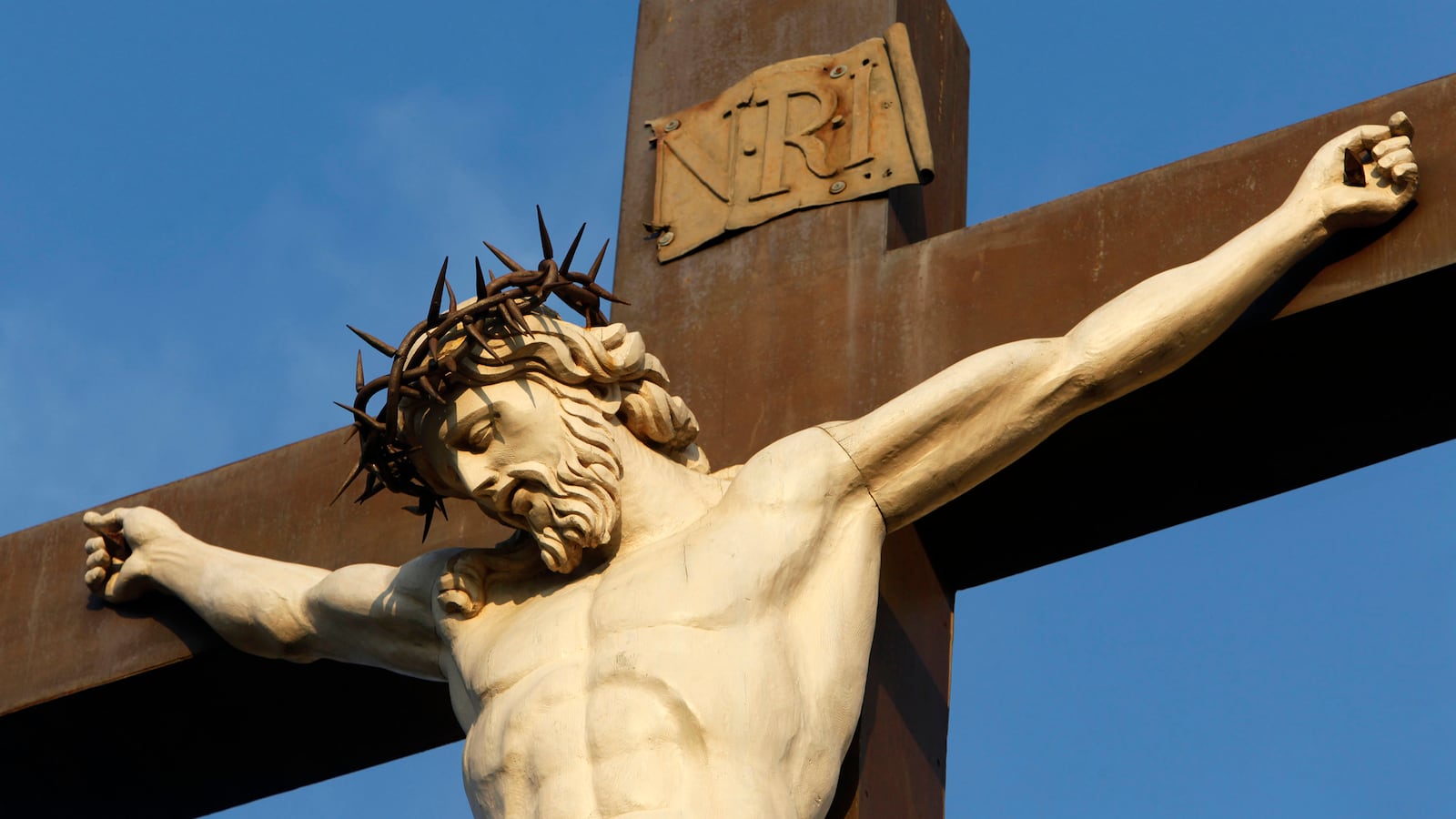We are in the midst of the Jewish High Holidays. Jews around the world tonight will begin observing Yom Kippur, the holiest day in the Jewish calendar, with a roughly 25-hour period of fasting and intensive prayer. Most non-Jews (and maybe even some Jews), however, are unaware the history of Yom Kippur, its purpose, or, most surprising of all, its influence on Christianity.
The biblical basis for the Day of Atonement can be found in Leviticus 16, which describes a series of religious rituals and animal sacrifices that had to be performed in the Jerusalem Temple in order to keep the Temple clean. Ritual sacrifices were offered year round so it’s strange that a special day was required, but Yom Kippur was something like a religious deep clean.
Professor Liane Feldman, who teaches in the department of Hebrew and Judaic Studies at NYU, explained that “anything that slipped through the cracks or hasn’t been cleaned up yet or can’t be cleaned up by regular [sacrificial] offerings is taken care of by a series of five sacrifices offered on this day.” The reason behind the obsession with ritual cleanliness is that the Temple was the home of God. As Feldman puts it. “the Israelite God cannot live in an impure place.” If the Temple gets too dirty then there’s the risk that God might leave (which is a thing that God actually does in Ezekiel).
The most intriguing part of the religious rituals is the mention of a goat over which the high priest confesses the sins of the Israelites and transfers the sins from the Temple to the goat. These sins are the most serious kind: they are intentional sins (sins you deliberately and brazenly commit). “The contamination caused by intentional sins can’t be cleaned up, it can only be moved from one place to another,” said Feldman. After the transfer of sins to the goat, to which was attached a red yarn collar, the goat was dispatched into the wilderness to “Azazel.” Writing sometime later, the rabbis—who were understandably concerned that the goat might trot back with its burden—weren’t content to just send the goat into the wilderness and, thus, insisted that the goat be pushed off a cliff and died. Feldman mentioned one rabbinic tradition in which a piece of red yarn is also tied to the Temple door. When the goat gets outside the community the yarn is supposed to turn white. The ritual is the origins of the modern term “scapegoat.”
Obviously, the key question here is what is Azazel? Well, we don’t really know. According to later Jewish tradition, Azazel is a fallen angel who had seduced human women and taught humanity metallurgy; weapon-making; cosmetics and bodily ornamentation; jewelry making; and other kinds of morally ambiguous sins. A Second Temple Jewish text known as the Book of Enoch writes that “the whole earth has been corrupted through the works that were taught by Azazel: to him ascribe all sin” (10.8). The roots of the story are found in Genesis 6:2-4 in which the “sons of God” (angels) see the human women and take them as wives (which leads to all kinds of wickedness and the flood). But it’s only much later that we learn about all intricate information and knowledge that Azazel taught human beings.
Ancient Jews were not the only ones who believed in the necessity of scapegoats. Similar rituals can be found among the ancient Greeks, Romans, Hittites, and in the mountains of the Tibet. As professor Jan Bremmer has written, the ancient Greeks were not averse to using humans as their scapegoats. In these rituals the scapegoat (or pharmakos, as he was known) would often enjoy a period of feasting and adulation before being driven out of the city (often while being beaten with sticks). In one example from the island of Leukas a criminal was thrown off a cliff into the sea in order to avoid evil. These scapegoat rituals seem to have regularly been associated with Thargelia, a festival held in late May in honor of the god Apollo, but they also took place in times of hardship, for example if the city was struck by disease or famine. Most of the candidates for the scapegoat were outsiders or liminal figures: criminals, prisoners of war, slaves, or very ugly people (one account says that “the ugliest person was selected”), but occasionally young people or even kings would be selected.
Given that ancient Greeks sacrificed people and the Bible describes elaborate rituals to eliminate sin, it’s easy to see why early Christians would use the same logic to discuss the significance of the death of Jesus. In the Gospel of John, Caiaphas, the High Priest states that “it is better for you to have one man die for the people than to have the whole nation destroyed” (11:50). This logic is richly explored in the Epistle to the Hebrews, one of the less well-known texts in the New Testament, in which Jesus is depicted as both the High Priest performing the sacrifices and the sacrificial offering itself. Harold Attridge, the Sterling Professor of Divinity at Yale, explained that “early Christians had to make sense of the death of Jesus” and the Epistle to the Hebrews cleverly used the day of atonement to do just that. What these New Testament authors are trying to explain is why Jesus died and how his death was significant, and in doing that they turned to Yom Kippur to explain both why it was that people needed saving and how it was that the death of Jesus could save other people.
In A.D. 70, at the end of the first Jewish War, the Romans destroyed the Temple and it has never been rebuilt. One might wonder, given the absence of goats, altars, and bulls what the point of Yom Kippur is today. The conclusion of the description of the Day of Atonement in Lev. 16 provides a guideline. The text says that the Israelites should “afflict themselves” so that they can be purified from their sins. Feldman told The Daily Beast that the majority of scholars believe that these verses were added into the Bible after the original passage, but the are part of the Torah and have become the focal point of modern observance. “Afflicting oneself” has been interpreted to mean things like fasting and sexual abstinence.
If all of this seems like a lot to think about, bear in mind that it could be worse: the prophet Ezekiel writes that observance of the Day of Atonement should happen twice a year (in the first and seventh months of the year). That’s something to be grateful for in May.






